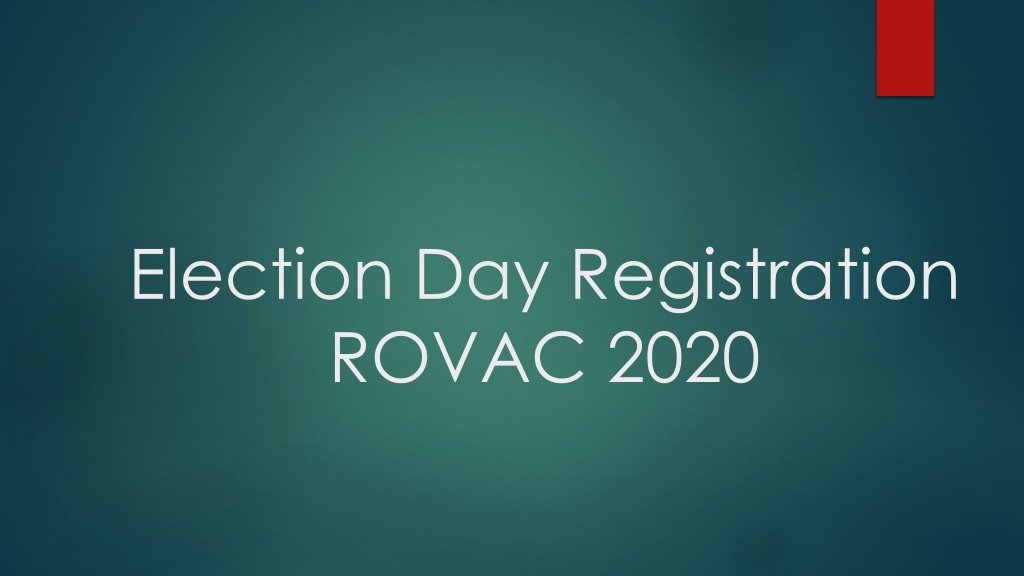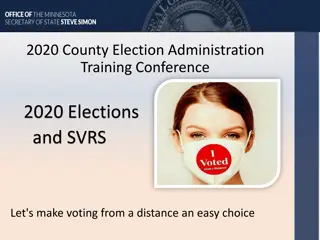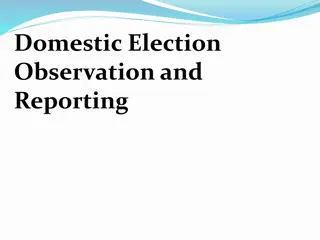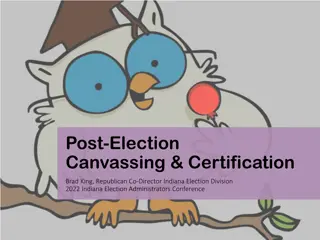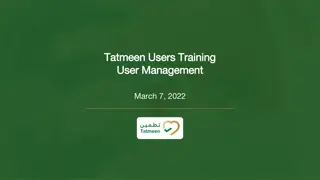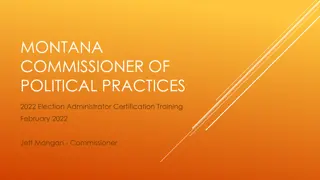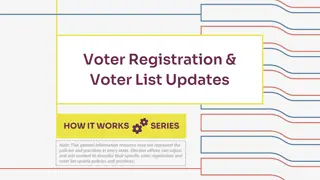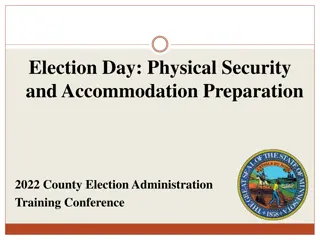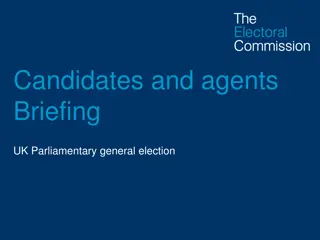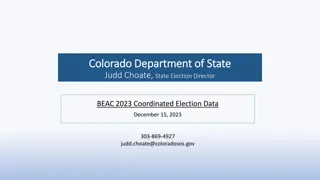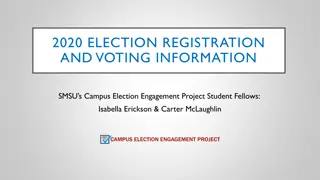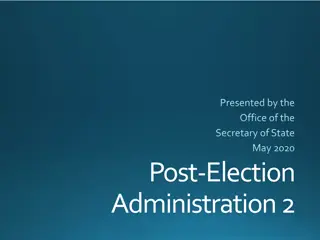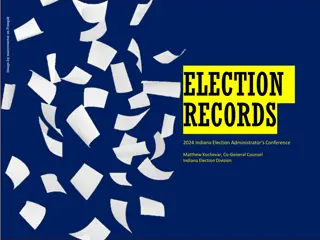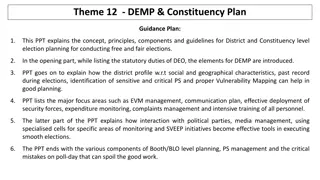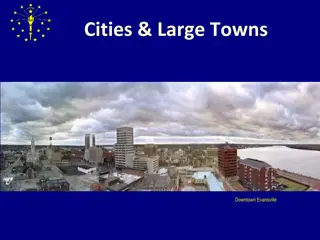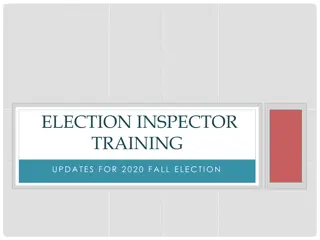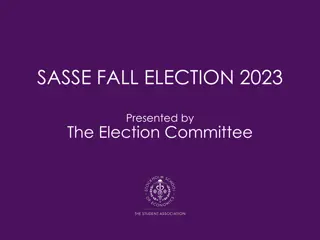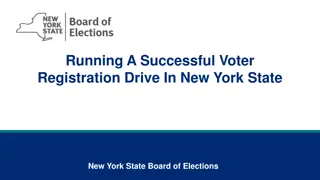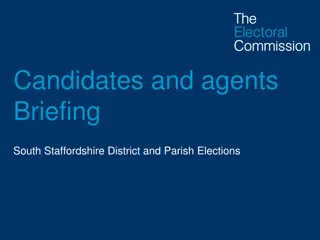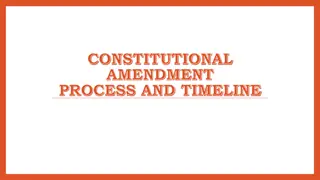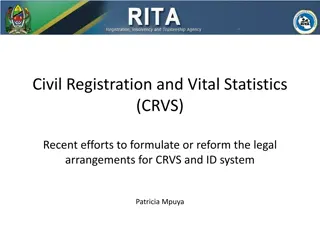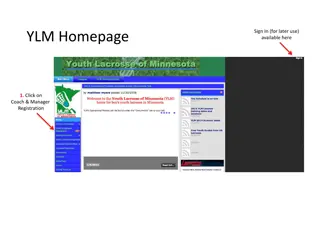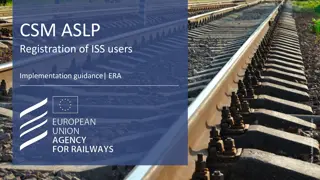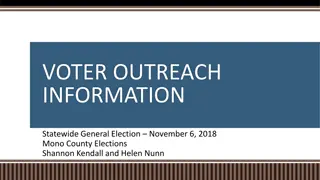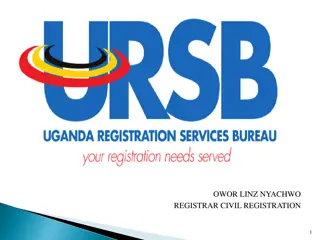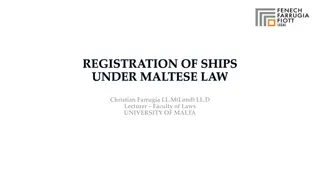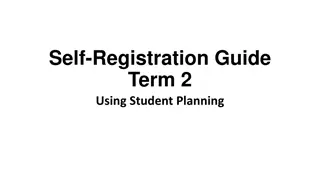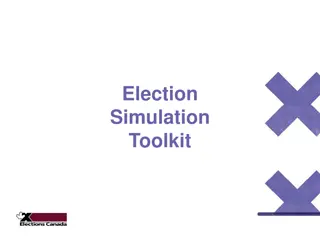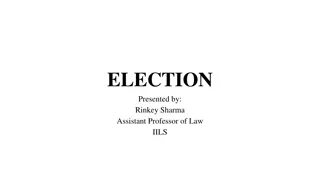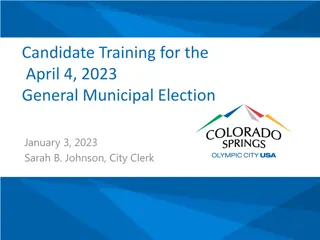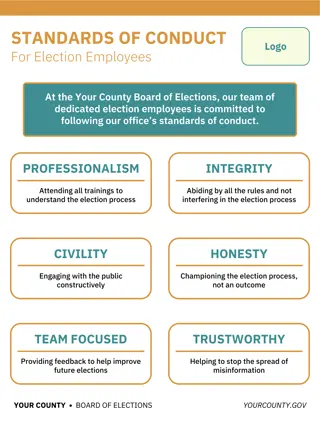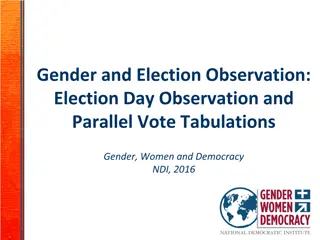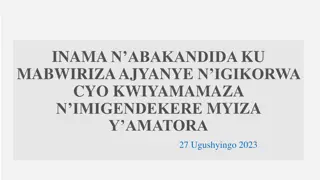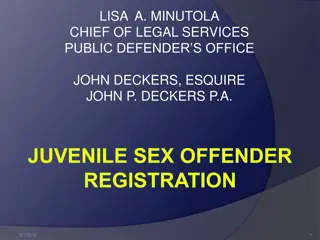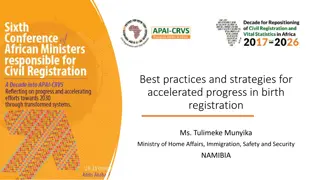Comprehensive Guide to Election Day Registration Process
This content covers essential aspects of Election Day Registration (EDR) for the ROVAC 2020 event. It includes topics such as the basics of EDR, ID requirements, staffing considerations, handling worst-case scenarios, public awareness strategies, and preparation for COVID-19 challenges. The guide emphasizes the importance of proper planning, identifying eligible voters, setup requirements, and compliance with regulations. It also provides insights into managing turnout, utilizing technology like IVS machines and CVRS, and ensuring ADA compliance for the registration location.
Download Presentation

Please find below an Image/Link to download the presentation.
The content on the website is provided AS IS for your information and personal use only. It may not be sold, licensed, or shared on other websites without obtaining consent from the author. Download presentation by click this link. If you encounter any issues during the download, it is possible that the publisher has removed the file from their server.
E N D
Presentation Transcript
Election Day Registration ROVAC 2020
What we will cover EDR 101, (The Basics of EDR) ID Requirements Pre-EDR Prep What size staff should you have Getting Prepared for the worst case scenarios Informing the Public of how EDR works and when it concludes Preparing for 8:00 PM COVID and EDR What has been working for you and what hasn t for your town.
Election Day Registration 101 Election Day Registration takes place only during General Elections. Citizens will need to prove both identity as well as residency on the day of the election. Only voters who are unregistered, registered in a different town or in off status in your town may register that day. You may want to use a greeter to redirect registered or inactive voters to the proper polling place. The EDR location is not a polling place, however the 75ft rule still applies. An IVS machine must be set-up and ready to use that day. Make sure your EDR location can handle a large turnout on Election Day. Also, make sure your location has access to CVRS. Contact SOTS to find out how many connections to CVRS you are allowed. You will need to have an educated guess on what your turnout will be that day. Do you have a college in town, or an active organization that will try to turn out the vote? Make sure that you have given SOTS the correct phone number so that towns can cross check during the day. Completed ballots are to be brought to your counting location by members of opposing parties. Check to make sure that your location ADA compliant.
Election Day Registration 101 Cont. Make sure to have a dedicated phone line for incoming calls from other towns. Revisit your EDR plan each year as you may not need the same amount of staff for a Presidential Election vs. a Municipal Election. New for 2020, anyone who is in line prior to 8:00 PM will be allowed to register and vote in the Election. Make sure that you are weeding out any electors who are unaware that they are already registered to vote.
EDR IDENTIFICATION REQUIREMENTS Those citizens who register to vote on Election Day MUST prove both Identity as well as residency in your town. A current Connecticut Driver s License or State ID issued by the Connecticut DMV that lists the citizen s current address would be an example of an ID that proves both the citizens Identity as well as residency. If a citizen lacks this they may present the following. The following items are acceptable proof of Identity: Birth certificate Driver's license Social Security card College and university students may present a current photo identification (ID) issued by their higher education institution in lieu of a birth certificate, driver s license, or Social Security card Testimony of another elector Other satisfactory proof to the registrar of voters
The following items are acceptable proof of Residency: The additional identification may include, but is not limited to a motor vehicle learner's permit, utility bill due no later than 30 days before the election, a copy of a residential lease, library card with residential address, paycheck, property tax bill, naturalization documents or passport (assuming it is recent and includes residential address). For a college or university student, a current college or university registration or fee statement.
EDR IDENTIFICATION REQUIREMENTS Those citizens who register to vote on Election Day MUST prove both Identity as well as residency in the City of Waterbury. A current Connecticut Driver s License or State ID issued by the Connecticut DMV that lists the citizen s current Waterbury address would be an example of an ID that proves both the citizens Identity as well as Waterbury residency. If a citizen lacks this they may present the following. The following items are acceptable proof of Identity: Birth certificate Driver's license Social Security card. College and university students may present a current photo identification (ID) issued by their higher education institution in lieu of a birth certificate, driver s license, or Social Security card. The following items are acceptable proof of Residency: The additional identification may include, but is not limited to a motor vehicle learner's permit, utility bill due no later than 30 days before the election, a copy of a residential lease, library card with residential address, paycheck, property tax bill, naturalization documents or passport (assuming it is recent and includes residential address). For a college or university student, a current college or university registration or fee statement.
What size EDR Staff should your location have? Make sure to look back at what your town processed for EDR in past elections. Remember that EDR has been in place since 2013. Small towns may not need to change what they have been doing, however medium sized towns and large cities will need to adjust. For example, in Waterbury: During the 2016 Presidential Election 27 people were hired to staff the EDR location However during the 2017 Municipal Election only 6 people were needed In 2018 we will had 17 workers in order to prevent long lines
Getting Prepared for any worst case scenarios Be aware of any hot local races that might impact your EDR operation. Campaigns could give rides to the EDR location. Make sure your EDR staff is large enough to handle any anticipated surge of citizens coming in to vote. Do you have a college in your town or off campus college housing? This alone could cause a long line of citizens looking to register. Social Media pushes like Facebook could cause a last minute rush to your EDR location. Remember that it is likely that a statewide campaign could bring in a big name celebrity or elected leader that may draw last minute citizens to your EDR location.
EDR During COVID You will need to set up a social distancing plan for your EDR Location. You may want to reach out to your local health department or Mayor/First Selectman s office to request help on this issue. There may be someone/agency that you can request help in coming up with a plan. Make sure to factor inclement weather into your plan. You will not want people standing in the rain. You will need to provide PPE for your workers. Face shields, hand sanitizer, and wipes for computer equipment will be needed. One person may need to greet people and then start to corral them into lines that allow for 6 ft of distance between each citizen.
Informing the Public about the EDR Process / Preparing for the 8:00 PM. It is important to inform the public ahead of time as to how the EDR process works on Election Day. Using social media such as the towns Facebook page can let people know the hours as well as who is eligible to register to vote at the EDR location. Medium towns and large cities may want to reach out to the media to better inform the public as to the hours and who is eligible to register that day. You may want to hang posters at the location informing people ahead of time that no one can join the line past 8:00 PM. Larger municipalities may want to consider having a plan for security if there are large crowds throughout the day. The better informed the public are, the less the Registrars will have to worry.
